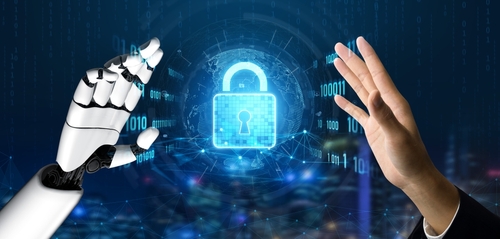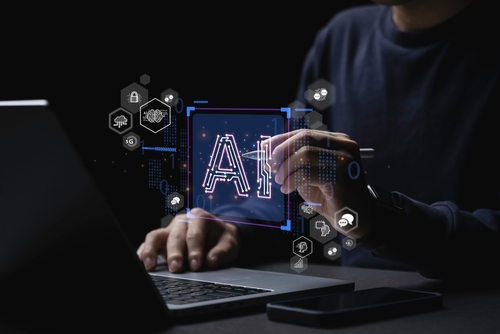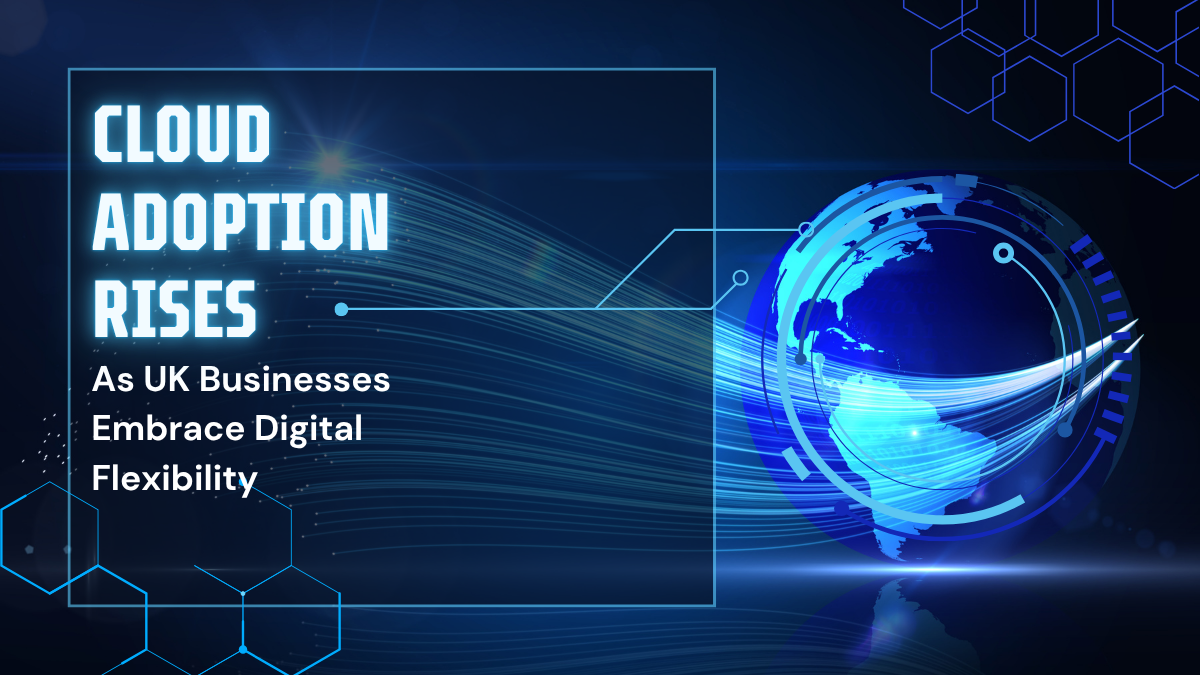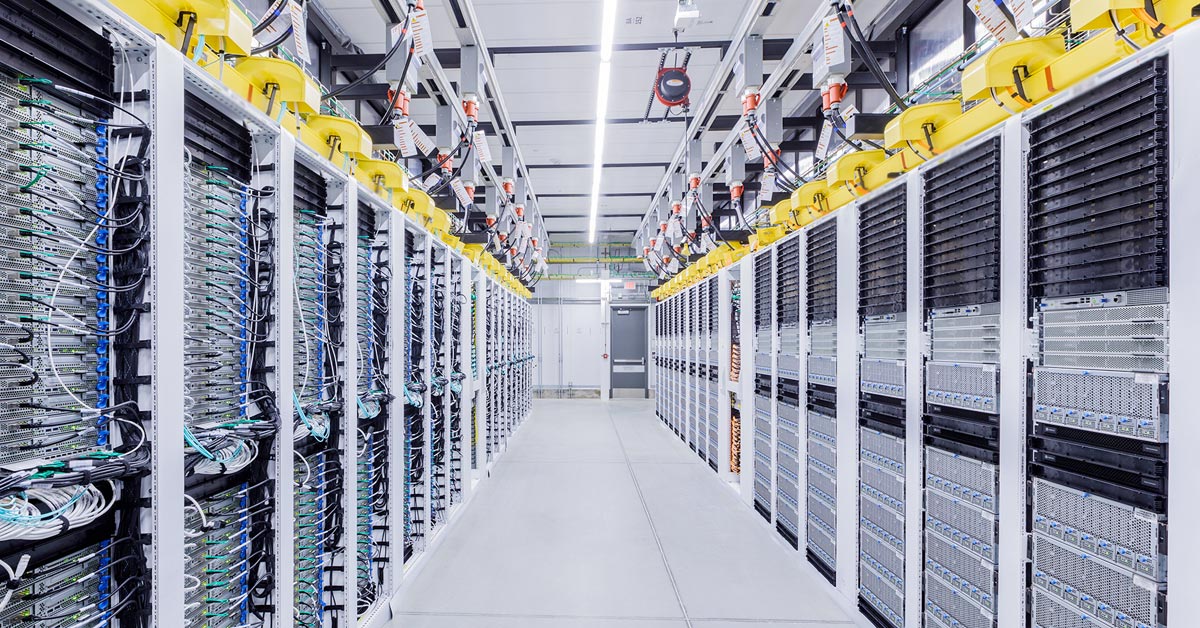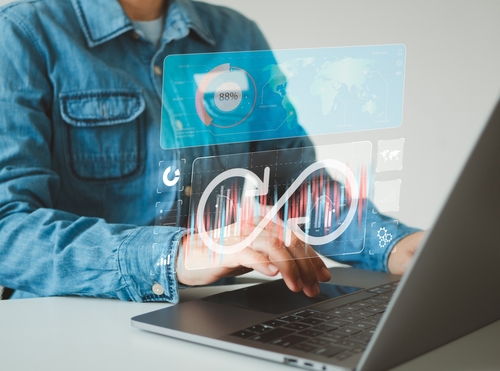Artificial intelligence is reshaping how organisations protect themselves from cyber threats. As cyber criminals develop new tactics and exploit weaknesses faster than traditional security measures can respond, AI in cybersecurity is becoming essential for improving defence, spotting unusual activity, and supporting security teams that are already stretched thin.
This guide follows the structure of the National Cyber Security Centre’s advice on AI and cyber security, explaining how AI systems work, where they offer value, the risks they introduce, and how organisations can safely adopt them. Whether you’re reviewing internal defences, modernising security operations, or exploring support from managed security service providers, understanding the role of AI for cyber security is now vital.
Early in the process, many organisations choose to work with specialist artificial intelligence consultants to help evaluate use cases and align AI security tools with wider risk management goals.
What AI Means for Cyber Security
AI in cyber security describes how machine learning, generative AI, and automated systems analyse security data, detect anomalies, and strengthen cybersecurity operations. These technologies help security analysts identify cyber threats earlier and reduce human error, especially when analysing vast amounts of logs and historical data.
AI systems can recognise patterns linked to cyber attacks, social engineering attacks, data loss prevention failures, or unknown threats that traditional rule-based security systems might overlook. They’re also used to enhance access management, improve threat hunting, support security workflows, and guide incident response.
Generative AI in cybersecurity adds new capabilities by interpreting natural language queries, summarising security incidents, and producing threat intelligence insights more quickly. However, generative AI tools also introduce risks, so organisations must ensure they deploy trustworthy AI and put guardrails around its use.
How AI Helps Security Teams
Security teams are under pressure from increasing cyber threats, a shortage of cybersecurity professionals, and the growth of sophisticated cyber criminals. AI cybersecurity tools offer several advantages:
1. Faster and More Accurate Threat Detection
Machine learning models specialise in enhancing threat detection by spotting anomalies in real time. They process security data at a scale no human security team could manually review. This capability allows organisations to accelerate threat detection across networks, applications, and cloud environments.
Real time threat detection is especially valuable when dealing with emerging threats or critical threats. AI powered tools can flag suspicious activity, reduce false positives, and help security and compliance teams concentrate on genuine incidents.
2. Supporting Overworked Security Professionals
Many organisations face understaffed security teams. AI agents help automate routine tasks, streamline security processes, and increase operational efficiency. This allows security professionals to focus on higher-value work such as analysing security vulnerabilities, reviewing security risks, and planning future attacks defences.
Cybersecurity teams benefit from AI tools that summarise alerts, classify cyber threats, and assist with security outcomes, giving analysts more time for threat hunting and investigation.
3. Strengthening the Overall Security Posture
When used appropriately, artificial intelligence improves an organisation’s overall security posture. It supports cybersecurity defenses through continuous monitoring, data analysis, and automated response actions. AI models trained on historical data can predict where cyber risk is most likely to appear.
AI in cybersecurity also helps identify patterns across large language models and machine learning models that might signal a developing cyber threat. Organisations with strong security measures and mature cybersecurity operations can use AI to extend visibility and reduce the risk of security breaches.
4. Generating Better Threat Intelligence
Cybersecurity generative AI enables security analysts to produce, summarise, and compare threat intelligence more efficiently. It can review cybersecurity threats, cyber attacks, and previous security incidents to create readable summaries for less technical audiences.
Generative AI models can also help security teams explore new data sources, refine cybersecurity training materials, and translate security data into actionable steps.
If an organisation lacks internal expertise, partnering with a custom software development company can help them build or integrate the AI tools required to process and interpret their security data effectively.
Risks of Using AI in Cyber Security
Although AI improves cyber security, it also introduces new security risks, safety concerns, and vulnerabilities that organisations must consider.
1. Data Poisoning and Manipulation
AI systems depend on high-quality data. If malicious actors poison training data or manipulate inputs, the resulting AI models may produce inaccurate decisions. This can weaken security outcomes, increase false positives, or allow cyber criminals to disguise cyber attacks.
Protecting sensitive data and ensuring data protection throughout the AI lifecycle is critical.
2. Generative AI Security Risks
Generative AI in cybersecurity creates opportunities for defenders — and attackers. Cyber criminals increasingly use generative AI tools to draft social engineering attacks, automate phishing messages, or create convincing scripts for cyber attacks.
Cybersecurity generative AI tools must be secured to prevent model misuse, unauthorised data access, and the exposure of confidential or sensitive data.
3. AI System Misconfiguration
AI in cybersecurity relies on correct configuration. Poorly set-up AI models or security systems can misinterpret security data, miss unknown threats, or trigger unnecessary alerts. Misconfigurations increase cyber risk and make security operations inefficient.
4. Security Risks of Artificial Intelligence in Decision Making
AI can sometimes make unpredictable decisions, especially when dealing with new or unusual cyber threats. Security analysts must remain responsible for final decisions. Relying solely on AI in security operations may cause organisations to overlook subtle patterns that AI cannot yet interpret.
5. Increased Attack Surface
Introducing AI tools adds new attack targets. Cyber criminals may try to compromise AI agents, exploit machine learning models, or interfere with data science pipelines. These vulnerabilities must be assessed and monitored like any other part of the infrastructure.
If your organisation needs support implementing safe and compliant AI systems, working with experienced teams such as those offering automation consulting services ensures the right controls, documentation, and risk assessments are in place.
How to Use AI Safely in Cyber Security
The NCSC recommends several practices for organisations adopting AI for cyber security:
1. Maintain Human Oversight
Security professionals and security analysts must remain in control of cybersecurity operations. AI should support decision making, not replace it. Human oversight ensures systems remain accountable, reliable, and aligned with organisational policies.
2. Protect Training Data
Training data must be protected against data poisoning, unauthorised access, and manipulation. Good data governance improves data security and reduces the risk of corrupted machine learning models.
3. Document Your AI Systems
Organisations should document how their AI models make decisions, what data they use, and how they integrate with existing security measures. This helps security teams quickly identify faults or security vulnerabilities.
4. Strengthen Access Controls
Access management around AI systems is essential to prevent data leaks, privilege misuse, or internal security breaches. Access must be monitored and limited to authorised users.
5. Monitor AI for Unusual Behaviour
AI systems can behave unpredictably. Continuous monitoring helps security teams detect errors, safeguard security workflows, and maintain a strong security posture.
6. Train Cybersecurity Teams
Staff must receive cybersecurity training to understand how AI works, how it handles sensitive data, how to use AI powered tools, and how to detect potential misuse.
What Organisations Should Do Next
AI in cybersecurity will continue to expand as organisations digitise operations, adopt cloud technologies, and deal with increasingly complex cyber threats. To stay ahead, businesses should:
- Evaluate security incidents from the past to understand where AI models could provide additional protection.
- Use threat detection tools that support machine learning and generative AI to improve response times.
- Strengthen cybersecurity processes and ensure incident response plans include AI-powered capabilities.
- Review cybersecurity generative AI tools for compliance with internal data security policies.
- Conduct risk assessments to identify the security risks of AI and ensure any new deployments align with organisational values.
- Explore managed security service providers if internal cybersecurity teams need additional capacity.
Organisations planning to build or deploy AI security tools internally may benefit from working with experienced engineers. Pulsion provides specialist support for businesses looking to hire AI developers who understand both cybersecurity and AI engineering.
Final Thoughts
AI in cyber security have become inseparable. Organisations that adopt artificial intelligence responsibly can strengthen cyber security ai capabilities, reduce human error, and improve protection against future attacks. While AI offers powerful benefits for threat detection, incident response, and data analysis, it also introduces new risks that require careful management.
By combining the strengths of AI with skilled cybersecurity professionals, robust governance, and continuous monitoring, organisations can improve their resilience, reduce cyber risk, and build a trustworthy AI security strategy for the future.
If you need support assessing AI cybersecurity tools, integrating AI into existing systems, or developing a long-term roadmap, Pulsion’s trusted specialists can help guide yo
